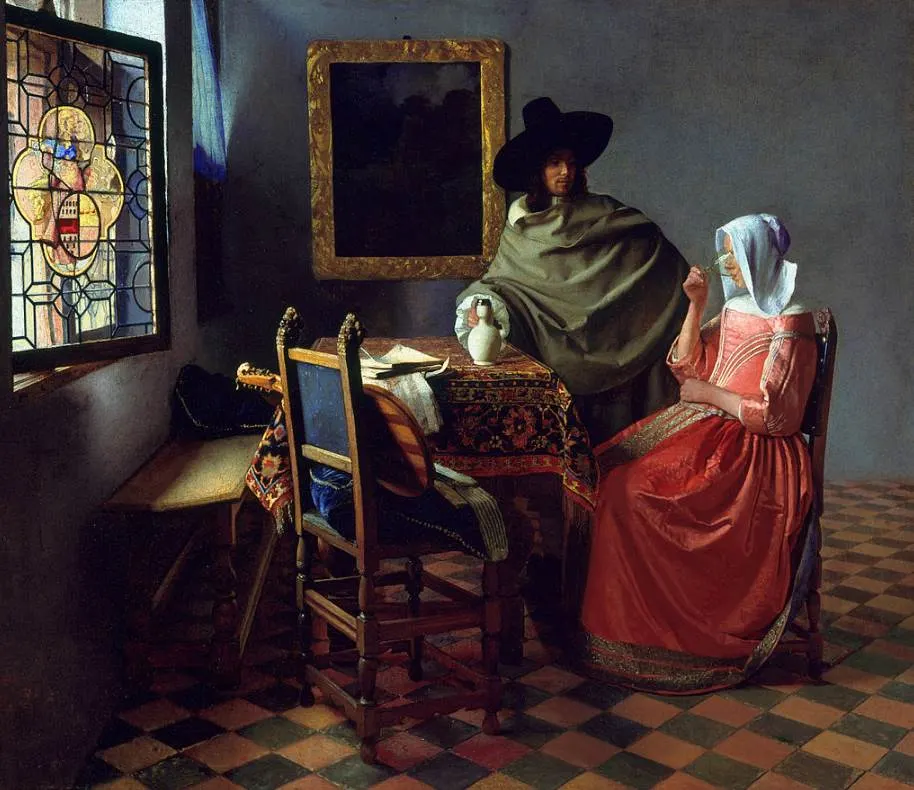When you visit Berlin, there’s one particular museum you should visit if you want to see European paintings completed between the 13th and 18th centuries.
The Gemäldegalerie is part of the Berlin State Museums and holds the main collection of paintings of this group of museums which consists of 17 different museums in 5 different locations.
The building which holds the collection is located at the Kulturforum, just south of the Großer Tiergarten, the largest and oldest public park in the city.
The museum was established in 1815 through an acquisition program of the Prussian Government. This is similar to how the National Gallery in London grew its collection size.
It first opened in 1830 and moved to its current location in 1998. The modern building is in sheer contrast with the Neoclassical buildings that dominate Museum Island in Berlin.
The collection of Old Masters at the museum just exceeds 3,000 paintings, but the collection’s quality is as good as it gets.
In this article, you’ll discover some of the most famous paintings at the Gemäldegalerie in Berlin.
1. Madonna in the Church – Jan van Eyck
- Date Created: 1438-1440
- Dimensions: 31 × 14 centimeters (12 × 5.5 inches)
The Madonna in the Church is a small painting by Jan van Eyck (1390-1441), the leading artist of the Flemish Primitives in the first half of the 15th century. This remarkable work of art isn’t much larger than a sheet of paper and was probably completed during the final years of the painter’s life.
Jan van Eyck mastered oil painting and this allowed him to add an incredible amount of details to his works. The Virgin Mary is depicted inside a Gothic church while holding her baby Jesus Christ. The work is believed to have been part of a diptych from which the right panel has been lost.

2. Miraflores Altarpiece – Rogier van der Weyden
- Date Created: 1440
- Dimensions: 71 x 43 centimeters (27.9 x 16.9 inches) (each of the 3 panels)

The Miraflores Altarpiece is an altarpiece that consists of three panels of wood. It was painted by Rogier van der Weyden (1399-1464), the Early Netherlandish painter who took over the role of Jan van Eyck as the court painter of Philip the Good following van Eyck’s death.
The there panels depict the Holy Family, a Pietà scene, and the appearance of Christ to his other Mary. All panels are rich in religious symbolism and are decorated with an arch that features Gothic elements. The paint has been in the collection of the Gemäldegalerie in Berlin since 1850 but was named after the Miraflores Carthusian monastery near Burgos in Spain where it hung for many centuries.
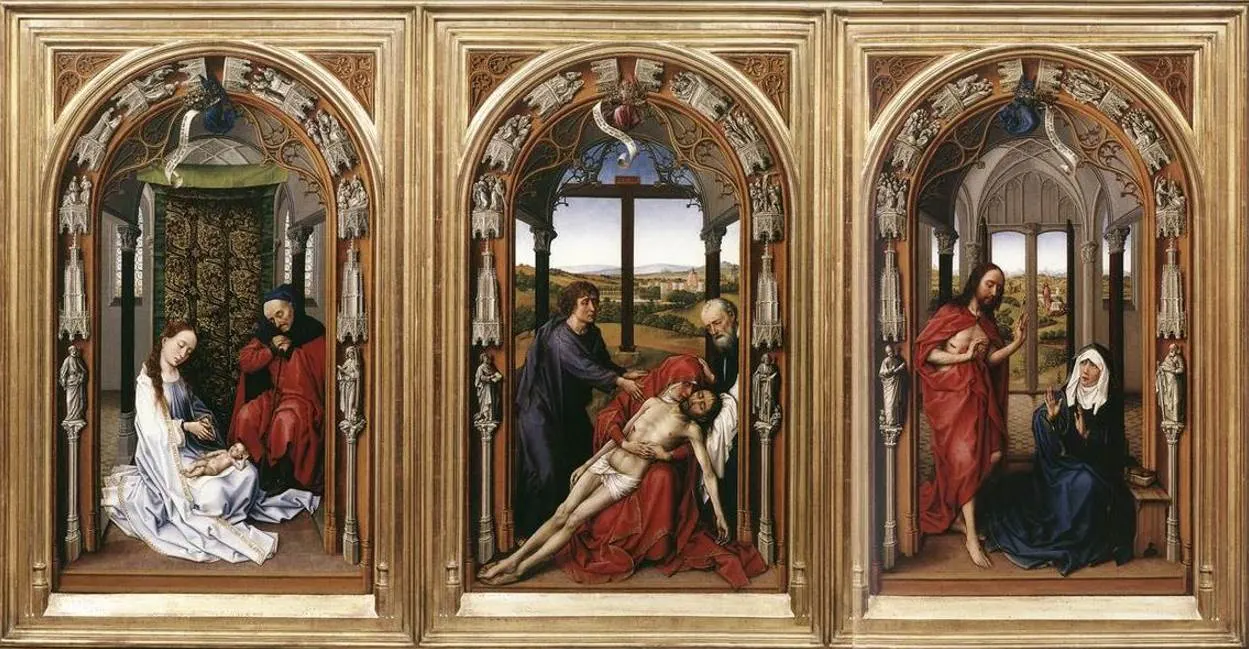
3. Portrait of a Young Girl – Petrus Christus
- Date Created: 1470
- Dimensions: 29 x 22.5 centimeters (11.4 x 8.8 inches)
Portrait of a Young Girl is the title of one of the most famous paintings in the oeuvre of Petrus Christus (1410-1475), yet another Early Netherlandish master. He was one of the leading artists of the Renaissance in the northern part of Europe and was influenced by both Jan van Eyck and Rogier van der Weyden.
The painting is significant because it was one of the first portraits in which the sitter was portrayed in a three-dimensional space. The girl also stares directly at the viewer instead of being depicted in profile which was common at the time. The identity of the sitter is probably the daughter of John Talbot, 2nd Earl of Shrewsbury (1413-1460) who might have attended the wedding of Margaret of York in Bruges in 1468.
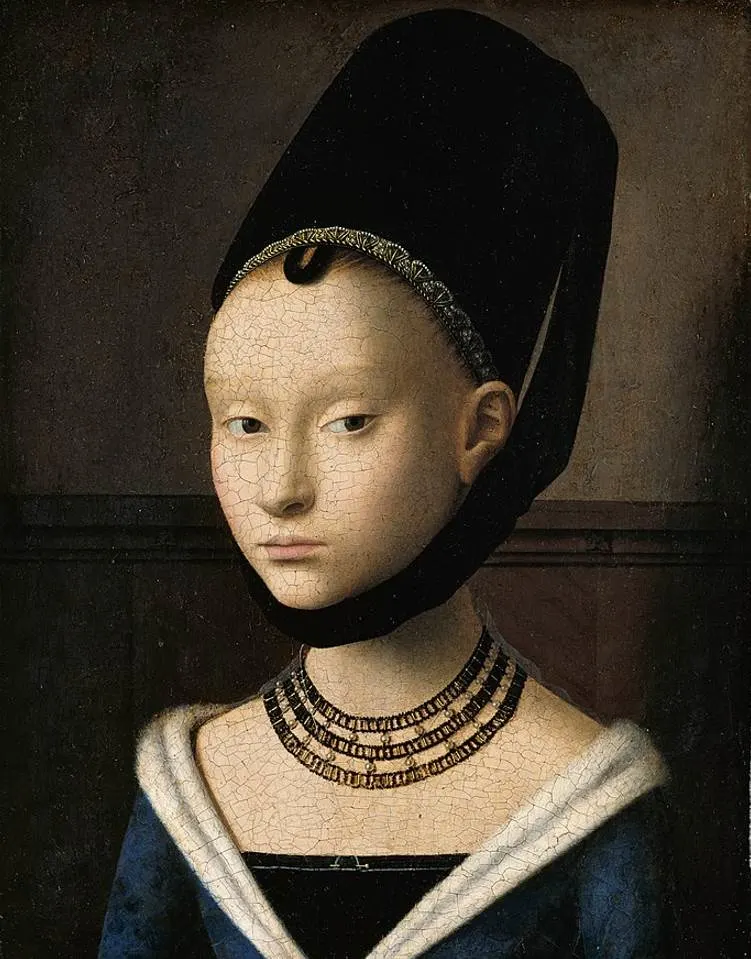
4. Leda and the Swan – Correggio
- Date Created: 1532
- Dimensions: 156.2 x 195.3 centimeters (61.4 x 76.8 inches)
Leda and the Swan is a painting by Antonio da Correggio (1489-1539), an Italian artist often referred to as simply “Correggio.” The painting depicts three scenes of the mythological store of Leda who is being seduced by Jupiter who has disguised himself as a swan.
The first scene on the right depicts the first meeting while the second scene in the center depicts the lovemaking. The third scene is the swan flying away while Leda takes her clothes back on. It’s one of several paintings in a series by the artist which he referred to as “Amori di Giove” or “Love Affairs of Jupiter.”

5. Netherlandish Proverbs – Pieter Bruegel the Elder
- Date Created: 1559
- Dimensions: 117 × 163 centimeters (46 × 64 inches)
Netherlandish Proverbs is an amazing painting by Pieter Bruegel the Elder (1525-1569), the leading artist of the Northern Renaissance in the 16th century. It depicts a large number of visual representations of Flemish proverbs and idioms that were popular back then.
A total of 126 proverbs and idioms have been identified, several of which are still used today. To “bang your head against a brick wall” or to be “armed to the teeth” are just a few examples. This work is similar to his other famous work titled “Children’s Games” (1560) which is part of the collection of the Kunsthistorisches Museum in Vienna.
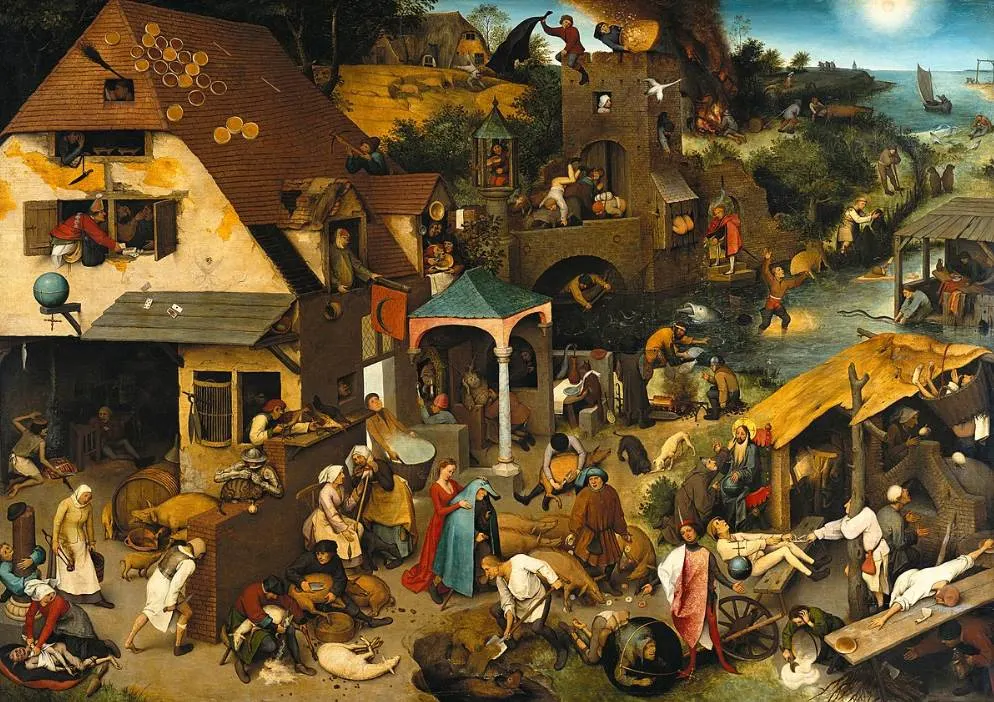
6. Amor Victorious – Caravaggio
- Date Created: 1601-1602
- Dimensions: 156 × 113 centimeters (61 × 44 inches)
Amor Victorious is a painting by Caravaggio that is also known as “Amor Vincit Omnia” (Love Conquers All) or “Cupid Victorious.” Michelangelo Merisi (1571-1610), the real name of the Baroque artist, redefined the use of chiaroscuro in art, which is the use of light and shadow.
The painting depicts Cupid, the Roman God of Live, who sits on top of a large number of items that represent the things that humans do. The subject of this painting was inspired by a line in a work of the ancient Roman poet Virgil:
Omnia Vincit Amor et nos cedamus amori (Love conquers all, let us all yield to love).

7. The Three Musicians – Diego Velázquez
- Date Created: 1618
- Dimensions: 88 × 111 centimeters (35 × 44 inches)
The Three Musicians is the title of a painting by Diego Velázquez (1599-1660), the Spanish artist who spent most of his career working at the court of King Philip IV of Spain. This is one of the earlier works by the artist and was completed when he was still a teenager aspiring to become a painter while living in his native Seville.
The painting depicts three young men who are playing music while sitting at a dinner table. It’s one of several paintings of the so-called Bodegón types in which he used chiaroscuro to highlight certain elements. He included many simple objects which allowed him to master the naturalism that made him so famous.

8. Company at a Meal – David Teniers the Younger
- Date Created: 1634
- Dimensions: 37 x 56.4 centimeters (14.5 x 22.2 inches)
Company at a Meal is a painting by the Flemish artist David Teniers the Younger (1610-1690), one of the most prolific and versatile artists of the 17th century. It depicts a very similar scene to the work of Diego Velázquez as we can see a group of people having dinner in a typical indoor interior of the upper class in the Low Countries.
David Teniers the Younger was the court painter of Archduke Leopold Wilhelm of the Habsburg Netherlands and also became the founder of the Antwerp Academy. This painting was completed in the early phase of his career while he was still in his early twenties.
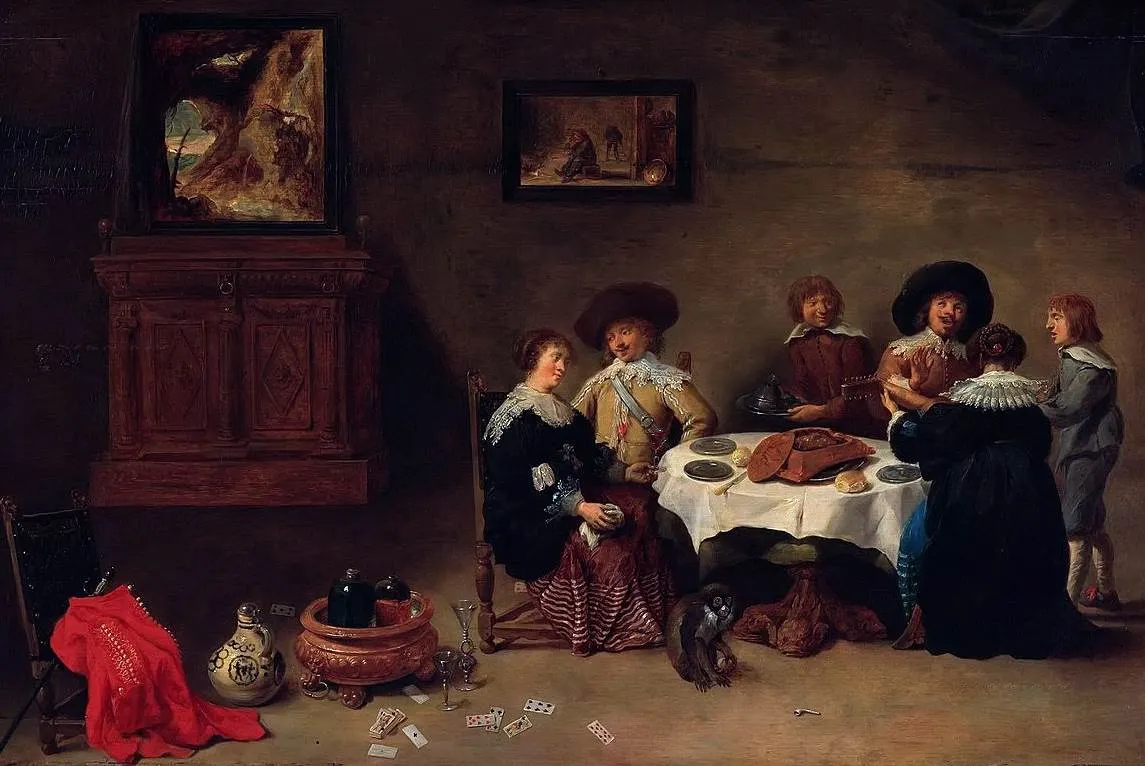
9. Self-portrait with a Velvet Beret – Rembrandt van Rijn
- Date Created: 1634
- Dimensions: 58.3 x 47.4 centimeters (22.9 x 18.6 inches)
Self-portrait with a Velvet Beret is the title of one of the dozens of self-portraits by Rembrandt (1606-1669), the most famous Dutch artist in history. It was completed at the height of his career, shortly after he had moved to Amsterdam to open up a successful studio.
Rembrandt van Rijn completed self-portraits to sharpen his skills and these serve as a visual autobiography of the extremely talented artist. He clearly appears to be very self-confident in this work which was completed the year when he married his first wife Saskia Uylenburgh.
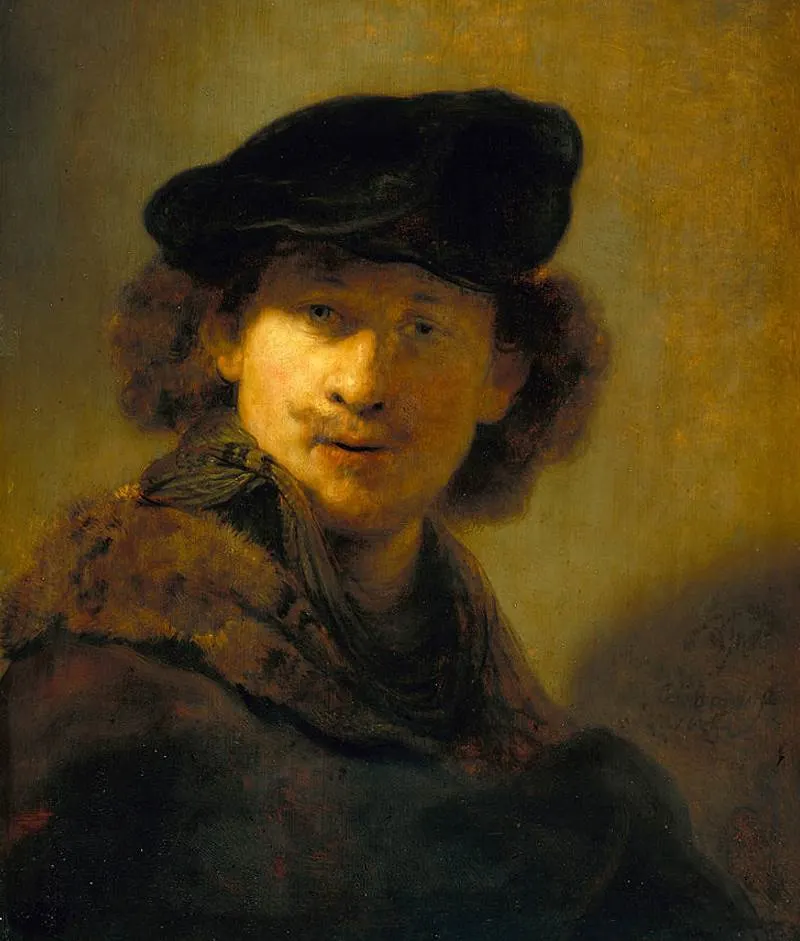
10. The Glass of Wine – Johannes Vermeer
- Date Created: 1658-1660
- Dimensions: 67.7 x 79.6 centimeters (26.6 x 31.3 inches)
The Glass of Wine is a painting by Johannes Vermeer (1632-1675), one of the most notable artists of the Dutch Golden age. The Dutch painter mainly focused on interior scenes depicting one or several people doing common things in a room inside his own house.
Vermeer’s oeuvre provides great insight into life in the Dutch Republic during the Dutch Golden Age. He mastered the use of light and managed to integrate a level of detail that was second to none. Although this work isn’t classified as his best, it still allows you to see the immense talent he possessed.
